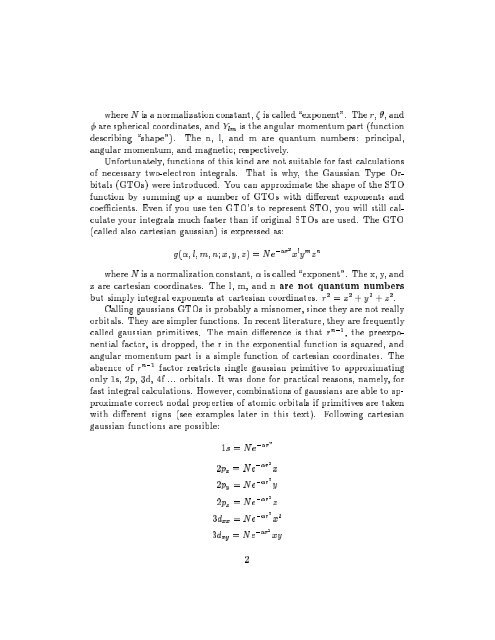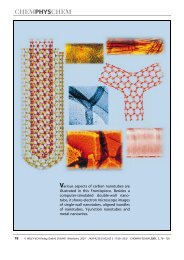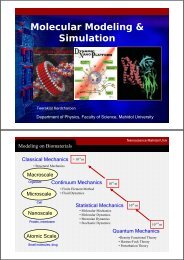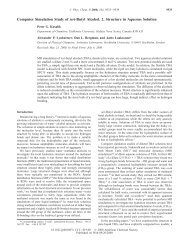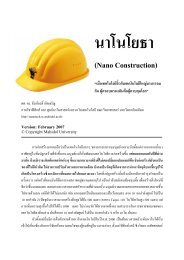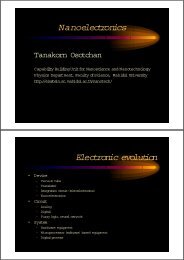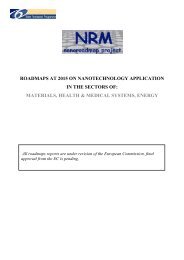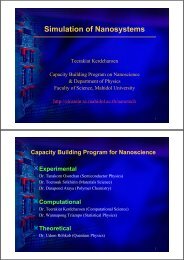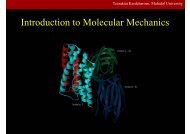SIMPLIFIED INTRODUCTION TO AB INITIO BASIS ... - Nano Mahidol
SIMPLIFIED INTRODUCTION TO AB INITIO BASIS ... - Nano Mahidol
SIMPLIFIED INTRODUCTION TO AB INITIO BASIS ... - Nano Mahidol
You also want an ePaper? Increase the reach of your titles
YUMPU automatically turns print PDFs into web optimized ePapers that Google loves.
where N is a normalization constant, is called \exponent". The r, ,and are spherical coordinates, and Y lm is the angular momentum part (functiondescribing \shape"). The n, l, and m are quantum numbers: principal,angular momentum, and magnetic respectively.Unfortunately, functions of this kind are not suitable for fast calculationsof necessary two-electron integrals. That is why, the Gaussian Type Orbitals(G<strong>TO</strong>s) were introduced. You can approximate the shape of the S<strong>TO</strong>function by summing up a number of G<strong>TO</strong>s with dierent exponents andcoecients. Even if you use ten G<strong>TO</strong>'s to represent S<strong>TO</strong>, you will still calculateyour integrals much faster than if original S<strong>TO</strong>s are used. The G<strong>TO</strong>(called also cartesian gaussian) is expressed as:g( l m n x y z)=Ne ;r2 x l y m z nwhere N is a normalization constant, is called \exponent". The x, y,andz are cartesian coordinates. The l, m, and n are not quantum numbersbut simply integral exponents at cartesian coordinates. r 2 = x 2 + y 2 + z 2 .Calling gaussians G<strong>TO</strong>s is probably a misnomer, since they are not reallyorbitals. They are simpler functions. In recent literature, they are frequentlycalled gaussian primitives. The main dierence is that r n;1 , the preexponentialfactor, is dropped, the r in the exponential function is squared, andangular momentum part is a simple function of cartesian coordinates. Theabsence of r n;1 factor restricts single gaussian primitive to approximatingonly 1s, 2p, 3d, 4f ... orbitals. It was done for practical reasons, namely, forfast integral calculations. However, combinations of gaussians are able to approximatecorrect nodal properties of atomic orbitals if primitives are takenwith dierent signs (see examples later in this text). Following cartesiangaussian functions are possible:1s = Ne ;r22p x = Ne ;r2 x2p y = Ne ;r2 y2p z = Ne ;r2 z3d xx = Ne ;r2 x 23d xy = Ne ;r2 xy2


